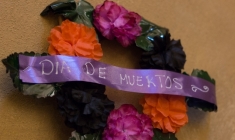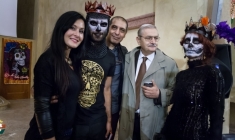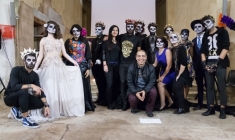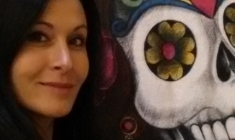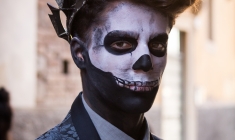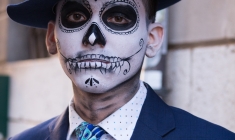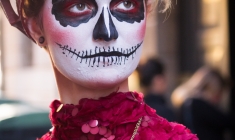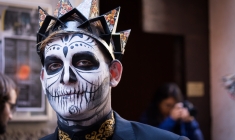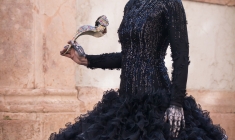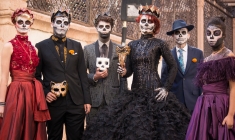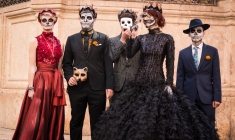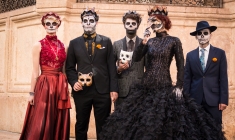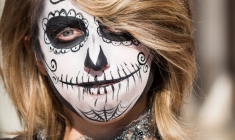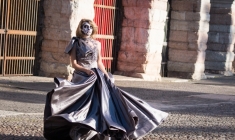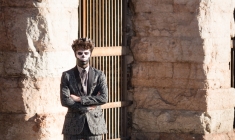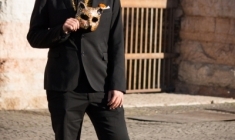Facepainting and MakeUp: Mihály Orsolya Éva, MIORSEVA MakeUp (Hungary)
Clothing, Jewelry, Accessories: Victor Mucio (Mexico)
Photo: Diego Giardinetto (Italy)
“La Calavera Catrina (‘Dapper Skeleton’, ‘Elegant Skull’) is a 1910–1913 zinc etching by famous Mexican printmaker, cartoon illustrator and lithographer José Guadalupe Posada. The image depicts a female skeleton dressed only in a hat befitting the upper class outfit of a European of her time. Her chapeau en attende is related to European styles of the early 20th century. She is offered as a satirical portrait of those Mexican natives who, Posada felt, were aspiring to adopt European aristocratic traditions in the pre-revolution era. She, in particular, has become an icon of the Mexican Día de muertos, or Day of the Dead.
Originally called La Calavera Garbancera, the etching was created sometime between 1910 and 1913 by José Guadalupe Posada as a broadside, and was published from the original plates in 1930 by Frances Toor, Blas Vanegas Arroyo and Pablo O’Higgiafia: Las Obras de José Guadalupe Posada, Grabador Mexicano. Calavera Catrina (Dapper Skeleton).This image can be found on plate 21 of Posada’s Popular Mexican Prints.
The image made from zinc etching captures the famous calaveras or skull/skeleton image that had become popular at the turn of the 20th century. The original leaflet describes a person who was ashamed of his indigenous origins and dressed imitating the French style while wearing lots of makeup to make his skin look whiter. This description also ties to the original name garbancera, which became a nickname given to people of indigenous ancestry who imitated European style and denied their own cultural heritage
“La Catrina has become the referential image of Death in Mexico, it is common to see her embodied as part of the celebrations of Day of the Dead throughout the country; she has become a motive for the creation of handcrafts made from clay or other materials, her representations may vary, as well as the hat.” – J.G. Posada”









